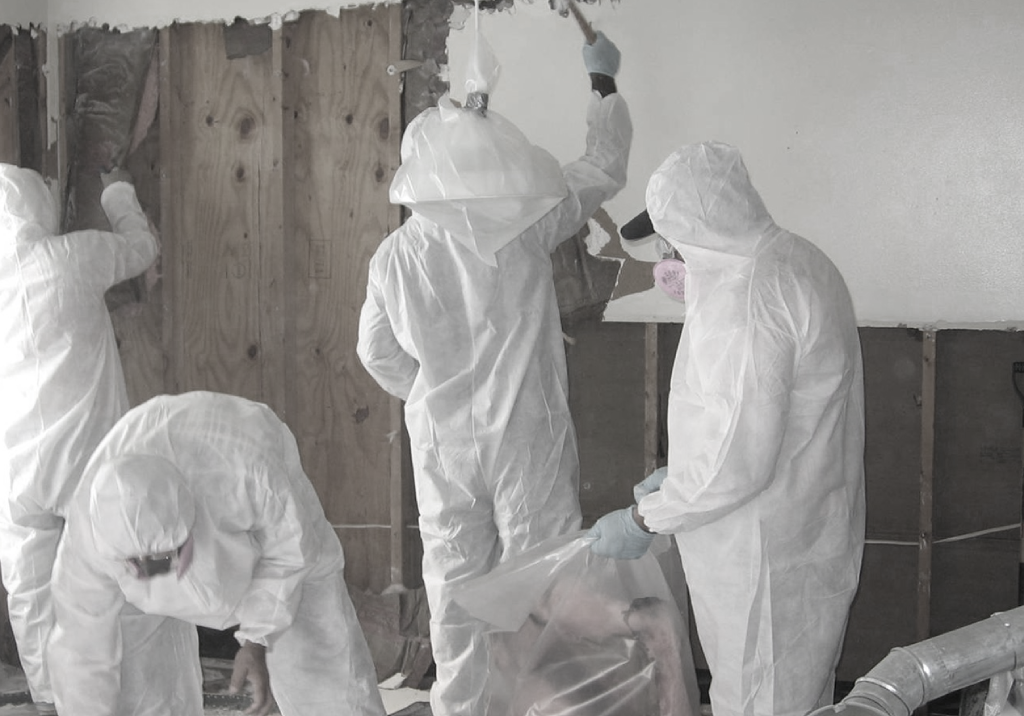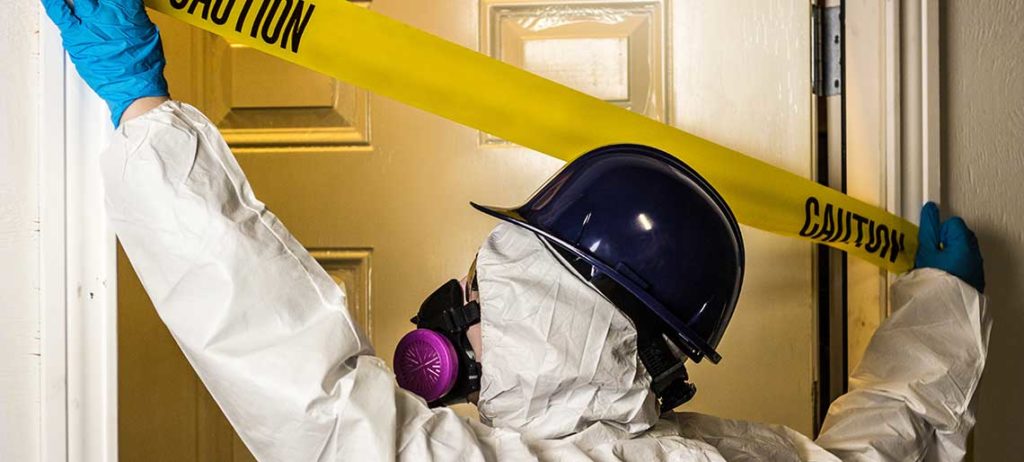Accurate ATP Testing for Effective Hygiene and Hygiene Surveillance
Accurate ATP Testing for Effective Hygiene and Hygiene Surveillance
Blog Article
Professional Biohazard Cleaning and Purification for Blood, Bodily Fluids, and Hazardous Materials
The potential health and wellness risks associated with direct exposure to biohazards highlight the crucial demand for precise handling and comprehensive cleanup. As we navigate the complex landscape of biohazard clean-up, comprehending the nuances of regulations, conformity, and the specific equipment at play comes to be important in making sure a secure and detailed decontamination procedure.
Health And Wellness Dangers of Biohazard Exposure
Exposure to biohazards positions considerable health dangers that can lead to extreme effects for communities and individuals alike. Biohazards include a vast array of organic materials, including blood, physical liquids, mold and mildew, germs, viruses, and various other potentially transmittable materials. When people enter contact with these biohazards, whether through mishaps, inappropriate handling, or environmental direct exposure, they encounter the risk of contracting serious diseases or illness.
Among the key health risks connected with biohazard exposure is the transmission of transmittable illness. Bloodborne microorganisms such as HIV, liver disease B and C, and different microorganisms can be existing in biohazardous materials, positioning a direct danger to human wellness. Breathing in airborne biohazards like mold and mildew spores or coming right into contact with infected surfaces can likewise bring about breathing issues, allergies, and other unfavorable health and wellness results.
In addition, biohazard direct exposure can have lasting health and wellness effects, with some illness manifesting years after the first get in touch with (Blood Cleanup). As a result, it is crucial to focus on correct biohazard cleansing and purification to alleviate these health and wellness threats and guarantee the safety of people and communities

Specialized Educating for Biohazard Clean-up
When it concerns dealing with biohazard clean-up effectively and securely, specialized training plays a fundamental role in making sure appropriate purification procedures are complied with. Biohazard clean-up calls for particular understanding and abilities to successfully mitigate risks linked with bloodborne microorganisms, bodily fluids, and hazardous materials. Specialists educated in biohazard clean-up undergo strenuous direction on just how to safely manage, remove, and deal with biohazardous products to avoid contamination and exposure.
Specialized training for biohazard cleaning covers an array of important subjects, including proper personal protective equipment (PPE) use, bloodborne virus awareness, purification techniques, and dangerous waste disposal methods. Individuals learnt biohazard clean-up are furnished with the necessary knowledge to assess contamination degrees, recognize possible risks, and carry out ideal clean-up procedures in compliance with regulatory requirements.
Continual training and education and learning are vital in the area of biohazard cleanup to stay updated on the latest purification technologies, safety and security protocols, and regulations. By buying specialized training, biohazard cleaning professionals can efficiently reply to emergency clean-up circumstances and safeguard both public wellness and the setting.
Significance of Proper Decontamination Strategies
Making use of appropriate purification techniques is essential in biohazard cleanup to efficiently eliminate hazardous materials and decrease health dangers. Efficient decontamination not only ensures the removal of visible traces of blood, physical liquids, and various other biohazards but additionally targets unnoticeable pathogens that may posture major wellness risks if not appropriately gotten rid of. By following rigorous decontamination methods, educated experts can considerably reduce the danger of exposure to harmful bacteria, viruses, and germs that could result in diseases or infections.
Correct decontamination strategies include using specific tools and anti-bacterials that are specifically made to counteract biohazards successfully. Thorough cleaning and disinfection of contaminated areas are vital to prevent the spread of microorganisms and ensure a safe environment for occupants. Additionally, the correct disposal of biohazardous waste following purification procedures is vital in stopping contamination of other surfaces or people.

Devices and Devices for Safe Cleaning
When dealing with blood, bodily fluids, or hazardous materials, biohazard cleansing experts rely on specialized gear to lessen exposure dangers and completely sanitize the damaged location. Furthermore, biohazard cleaning sets having disinfectants, absorbing products, and biohazard bags are utilized to securely include and dispose of infected products.
Advanced cleansing tools like hospital-grade disinfectants, HEPA-filtered does ammonia clean up blood vacuums, and fogging devices are utilized to sanitize surface areas and remove biohazards effectively. Specialized equipment such as sharps containers and biohazard garbage disposal containers are used to safely take care of sharp objects and biohazardous waste products. By making use of the best equipment and devices, biohazard cleansing specialists can make sure a thorough cleaning procedure that prioritizes safety and security and reduces health risks for both workers and occupants of the afflicted go now space.
Regulations and Compliance in Biohazard Cleaning
Proper adherence to laws and compliance criteria is vital in biohazard cleansing to guarantee the safety of both workers and the setting. Federal government firms such as OSHA (Occupational Safety and Wellness Management) and the EPA (Epa) have developed particular standards for biohazard clean-up procedures to reduce health and wellness threats and ecological contamination. These regulations cover a series of elements including the handling, transportation, and disposal of biohazardous products, in addition to the necessary training and protective equipment required for personnel included in the clean-up procedure.
Biohazard cleansing business should stay current with these guidelines to guarantee that their procedures satisfy the required safety and security standards. Failure to follow these guidelines can cause serious consequences, consisting of penalties, lawsuit, and jeopardizing the wellness of individuals and the atmosphere. By adhering to rigorous laws and compliance actions, biohazard cleaning business can efficiently reduce dangers and make certain a risk-free and thorough cleaning procedure for all parties involved.
Verdict
Finally, biohazard cleansing and purification need specific training, correct strategies, and adherence to guidelines. Exposure to blood, physical fluids, and hazardous products presents significant health risks, making it vital to make use of the right tools and tools for secure cleaning. By adhering to stringent protocols and standards, specialists can properly reduce the risks associated with biohazard exposure and make sure the safety and security of both more helpful hints themselves and others.
As we navigate the elaborate landscape of biohazard clean-up, comprehending the subtleties of policies, compliance, and the specialized equipment at play comes to be vital in making sure a detailed and secure purification process. (Blood Cleanup)
When it comes to taking care of biohazard clean-up effectively and safely, specialized training plays a basic function in making certain proper purification procedures are adhered to.Utilizing correct decontamination strategies is critical in biohazard cleanup to efficiently remove dangerous products and lessen health and wellness risks. In addition, biohazard cleaning kits including disinfectants, absorbent products, and biohazard bags are made use of to securely include and get rid of of infected products.
Federal government agencies such as OSHA (Occupational Safety And Security and Wellness Administration) and the EPA (Environmental Security Company) have actually developed particular standards for biohazard cleanup procedures to reduce health and wellness risks and ecological contamination.
Report this page